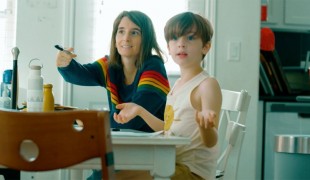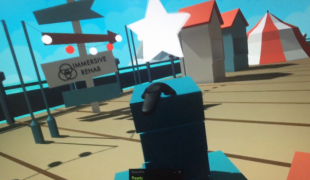- 9529
- 604
- 15
- 14
- 0
- Help Ukraine
About the solution
Manjima Sarkar's uncle but, for a long time, did not seek medical advise. Her uncle eventually went to the hospital, and was diagnosed with a severe stroke. But due to the fact the patient waited for so long to go to the doctors, he suffered permanent memory loss and impaired speech. So his niece wanted to create a way to help patients get help right way, and preventing situations as Ardhendu’s.
The app works by helping in the event an at-risk patient experiences stroke symptoms — such as severe headaches or sudden weakness, numbness or trouble walking — they could immediately call into an INTRAM-run telestroke network. Depending on the severity, a physician would encourage the patient to call an ambulance or head to an in-network treatment facility. INTRAM’S search algorithm would direct the patient to the nearest medical office with the shortest wait times.
“Patients using this app would get to the hospital within a shorter time window, allowing them to receive medication that is both cheaper and more effective,” explained the INTRAM team member Choudhury, a sophomore biomedical engineering student. “This would improve their survival rates and significantly cut down on recovery time because their strokes wouldn’t be allowed to progress to the point of debilitating neurological impairment.”
Team members, through a $2,500 grant from the National Science Foundation, canvassed potential customers to learn their problems and how they might address them. The NSF awarded the money to USC through an Innovation Corps “I-Corps” site grant.
The National Academy of Engineering recently selected the USC team as one of the United States' representatives to the 2017 International Student Day Business Model Competition.
Adapted from: http://bit.ly/2u4Gh8u
这些解决方案不应包括使用药物,化学品或生物制品(包括食品);创伤性设备;冒犯性的,商业或内在危险的内容。该解决方案未经医学验证。请谨慎进行!如果您有任何疑问,请咨询健康专家。
DISCLAIMER: This story was written by someone who is not the author of the solution, therefore please be advised that, although it was written with the utmost respect for the innovation and the innovator, there can be some incorrect statements. If you find any errors please contact the patient Innovation team via info@patient-innovation.com
-
-
317
-
0
-
4230

Memory Lane Games - Reigniting memories for those with Dementia & Alzheimer's
CAREGIVING
COMMUNICATION: Communicating, whether by speaking, listening, or other means
Alzheimer's Disease
App (Including when connected with wearable)
Videogame
Memory loss
Recovering cognitive function
Promoting self-management
Managing Neurological Disorders
Building Supportive Community Relationships
Promoting inclusivity and social integration
Enhancing Mental Health
Improving Speech and Communication
To improve Treatment/Therapy
Preventing (Vaccination, Protection, Falls, Research/Mapping)
Raise awareness
Caregiving Support
General and Family Medicine
Neurology
United Kingdom
-
-
-
250
-
0
-
2817

Mother Eileen Lamb implemented a series of voice assistant-driven strategies to support her raising her two autistic children.
COMMUNICATION: Communicating, whether by speaking, listening, or other means
CAREGIVING
Social interaction
(SELF)-CARE: GROOMING: Personal grooming, such as combing hair or shaving
Autism
Strategy/Tip
AI algorithm
Promoting self-management
Managing Neurological Disorders
Promoting inclusivity and social integration
Improving Speech and Communication
To improve Treatment/Therapy
Preventing (Vaccination, Protection, Falls, Research/Mapping)
Caregiving Support
Child and Adolescent Psychiatry
General and Family Medicine
Neurology
Pediatrics
United States
-
-
-
405
-
0
-
4512

Helping people affected by neurological conditions live more independent lives again with our digital therapies for neurorehabilitation.
CAREGIVING
(SELF)-CARE: EATING: Eating independently.
(SELF)-CARE: DRINKING: Drinking independently.
(SELF)-CARE: HYGIENE: Maintaining personal hygiene
BODY BALANCE: Maintaining body balance
Multiple Sclerosis
Spinal Cord and Nerve Root Disorders
Stroke
Assistive Technology access
3d Printed
Treatment/Surgical device
Website
Muscle cramps or spasms
Difficulty coordinating movements
Stiffness or rigidity (difficulty moving)
Muscle weakness
Anxiety
Fatigue
Cold hands or feet
Restoring mobility
Rehabilitating After Stroke
Managing Neurological Disorders
Recovering from Traumatic Injuries
To improve Treatment/Therapy
Cardiology
General and Family Medicine
Intensive Care Medicine
Neurology
Physical Medicine and Rehabilitation
United Kingdom
-
 zh
zh